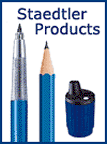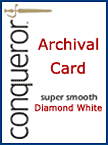Workshop Plus
WORKSHOPS 2025
- Latest posts:
- Susan Wk2
- Ida Wk2
- Debra Wk1
- Carolyn Wk5
Susan (Assisted Online Intermediate)
WEEK 2: EXERCISE 1
The trick is to look at the white line as you draw the dark lines. That way the feedback from your mind to your hand is focused on the narrow white line. Try a few more, because it's an exercise well worth the effort.
WEEK 2: EXERCISE 2
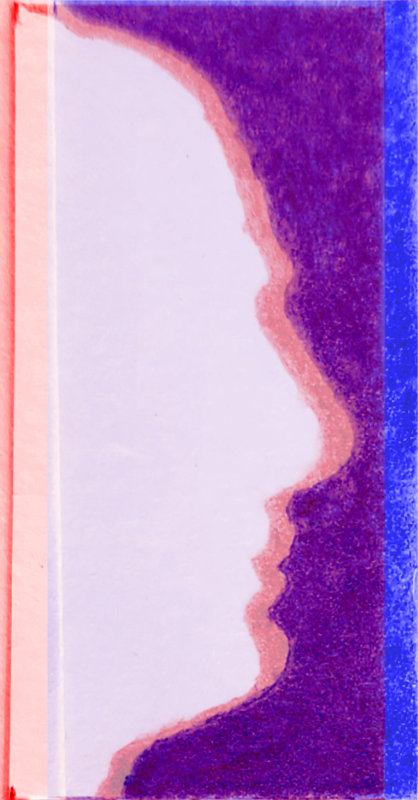
Well! It's essentially about using the negative space between the shape and the frame to reconstruct it. I won't make the second part public for obvious reasons.
The red is your right half recoloured. Then I flipped the left half, recoloured it blue, and laid it over the blue. It was such a perfect match that I had to offset the blue half to the right just to appreciate how wonderfully alike they are.
As you discovered, by studying and copying the space between the lines and borders (the abstract negative space) you were avoiding drawing recognisable shapes. I once spent a day trying to get the correct curve of a dog's bottom eyelid. It was only when I looked at the surrounding negative space, and drawing that, that I realised my brain was telling me the curve was convex (because that's what my brain expected to see) where in reality it was concave.
It can take time to train yourself to see negative space in everything but, once you've achieved the ability to switch between positive shape and negative space, you'll find it invaluable.
Recommended viewing:
NEGATIVE SPACE: Intro
NEGATIVE SPACE: Part 1
NEGATIVE SPACE: Part 2
WEEK 2: EXERCISE 3
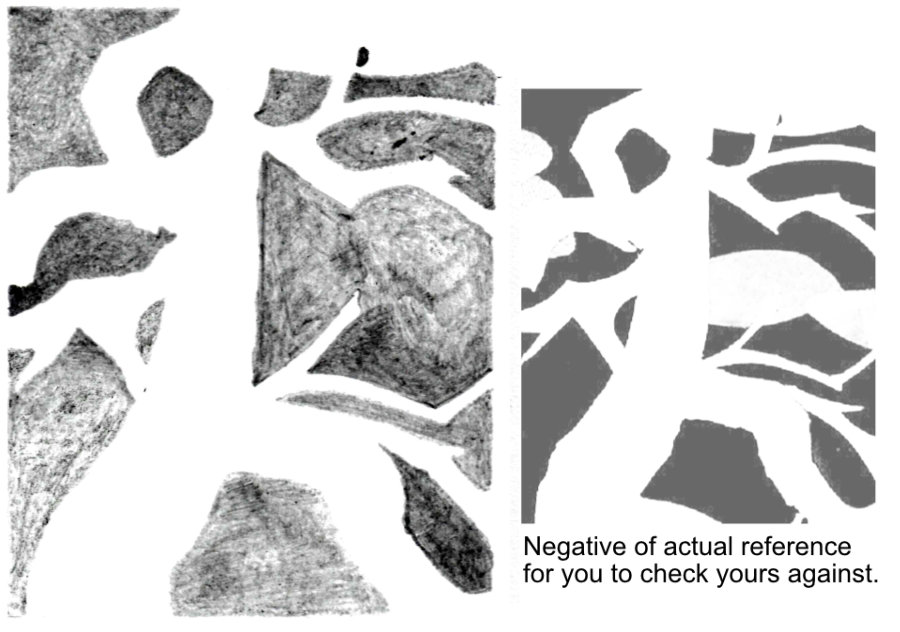
I can't begin to describe how powerful and useful being able to see negative space is. Without going into it too deeply... we possess an inbuilt recognition system. It uses icons for speed and those icons are simple full-face images. A mouth, for example, is stored facing us, never at an angle. It's for safety recognition - if you see a mouthful of large teeth heading in your direction you need to flee. You'll recognise it instantly, even if you don't recognise the animal the teeth belong to. The latter is unimportant, the former isn't!
This should help explain everything: NEGATIVE SPACE INTRO
The greatest problem to overcome when drawing is to ignore the whole system. If you allow it to operate you will draw what you "know" rather than what you see - a three-quarter angled face, for example, that you adorn with a mouth facing the viewer.
It's also a logical "left brain" thing that loves to name things. "That's a MOUTH!" It is, but it's the stored generic mouth - not the mouth in your reference.
The best way to defeat the detection/naming problem is to study and draw the negative space around the nameable feature. The negative space is abstract and cannot be recognised as being "something". Whenever I have a problem correctly visualising something, I look at the negative spaces around it. It has solved countless problems over the years.
WEEK 2: EXERCISE 4
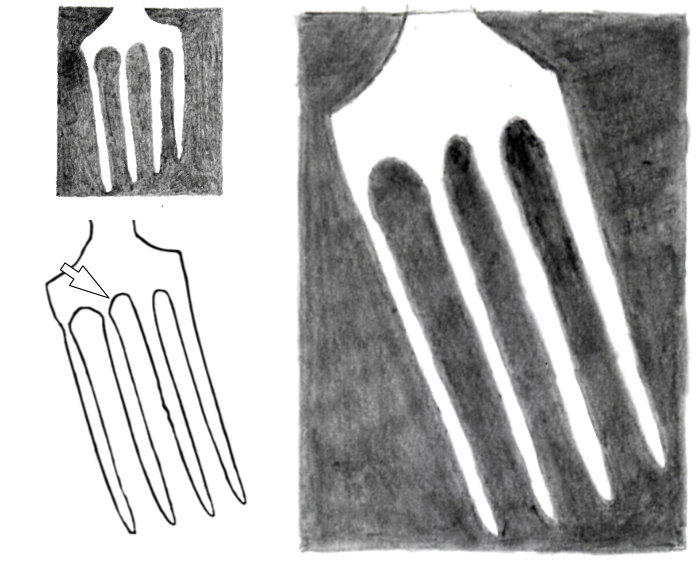
I did a 'practice' first...everything
was out of proportion.
But at least you were practicing, and that's never a bad idea.
Well, my shading of the negative space around the fork looks like my 6-year old granddaughter has been drawing. Actually...she might do a better job!
Sign her up! Maybe do the Foundation course first...
Well, my shading of the negative space around the fork looks like my 6-year old granddaughter has been drawing. Actually...she might do a better job!
The tines (prongs) are not bad at all but... you appear to have not noticed that the tines have subtly curved edges and seen them as being straight, which a lot of artists do. Compare it to the outline I've included and you'll see what I mean.
However, I'm principally looking at the curves between the tops of the tines, as this method is ideal for capturing those accurately. Two out three's not bad going but the third (arrowed) is a shadow of its true self... I think you drew what you expected to see. In that case, you were looking at the curve and not the negative space around it. Use a piece of card, your pencil, your finger, anything that will hide the curve except the part you want to draw. Look at the negative space around it and draw that.
This is a deceptively difficult subject but the card method should have shown you exactly how each of those curves was formed.
Laying a piece of card along them will show you exactly how those curves are individually formed - exactly as they are. That's the beauty of this method, it divorces what you expect to see from what is actually there. Capturing such subtle differences can often make the difference between a successful drawing and a problematic one. Probably your viewers won't know why something "looks wrong" but it will unsettle them and damage the overall reality.
These will help you:
NEGATIVE SPACE: Introduction
NEGATIVE SPACE: Part 1
NEGATIVE SPACE: Part 2
Ida (Online Advanced)
WEEK 2: EXERCISE 1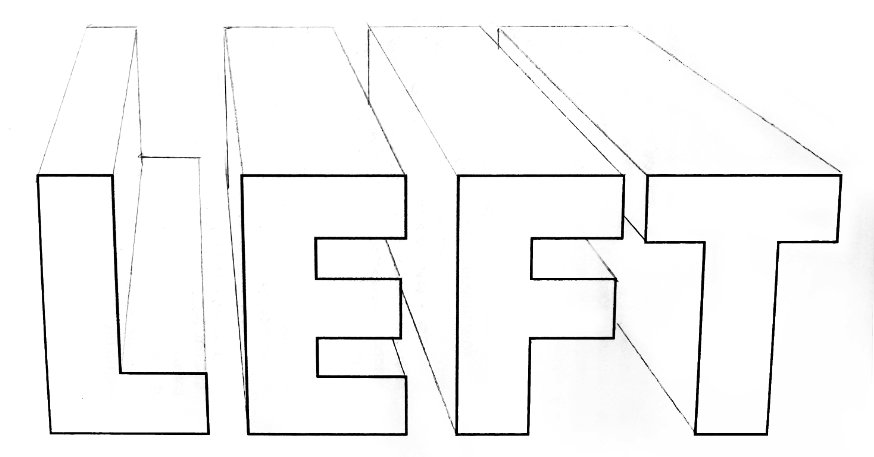
They might sound like simple points, but I think you'd be surprised how many on this course have tried that... and got it wrong!
WEEK 2: EXERCISE 2
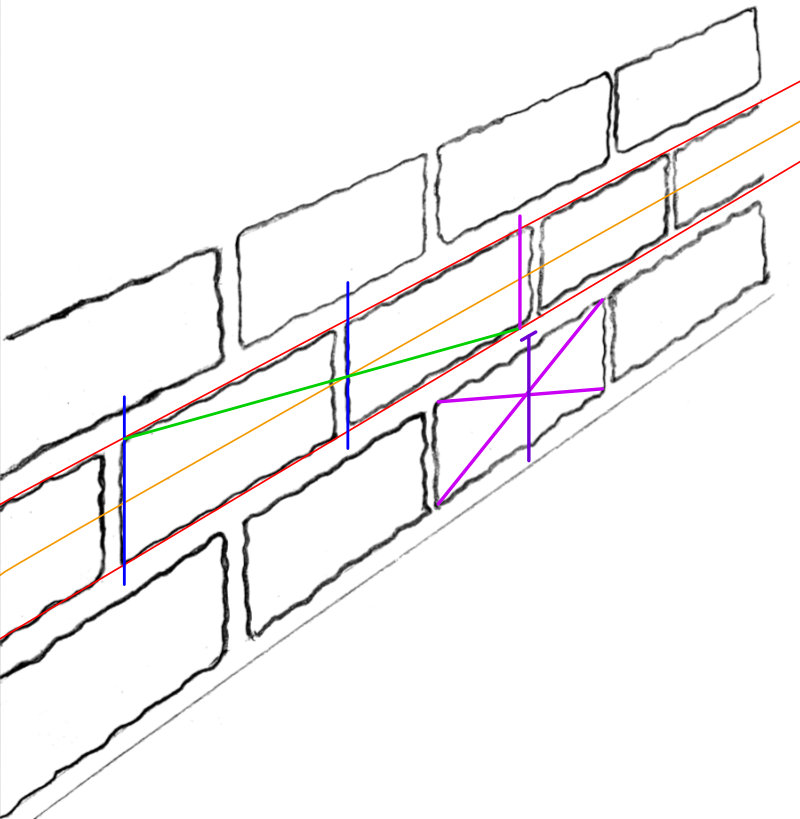
Is it correct that the relation between the bricks in one row will be a little distorted to the one in the next row? I've measured and measured with a ruler but can't see where I went off... 
Entirely true. What fools most people is the centre. The centre of each brick in perspective is NOT central.

Now true centre can be found, it can be used to accurately plot the length of each brick in perspective. Your perspective is very accurate, so finding your Vanishing point (VP) was easy. The important line is the orange one that runs through the middle of the row. My two blue lines mark the width of the brick plus the mortar. Now imagine the right-hand blue line is the centre between TWO bricks. Now when my green lines passes through its middle it finds the length of the second brick. My fuchsia vertical line marks where that brick should end. Yours is just a little too long.
That might seem like a lot of work, but from there on you can draw everything by eye. If necessary, continue to use the green diagonal along one complete row if you need to. Then you just move every alternate row half a brick one way.
Also, once you have that system in mind - and have used it a couple of times - it becomes quite easy to just draw by eye, but much more accurately than you previously could.
WEEK 2: EXERCISE 3
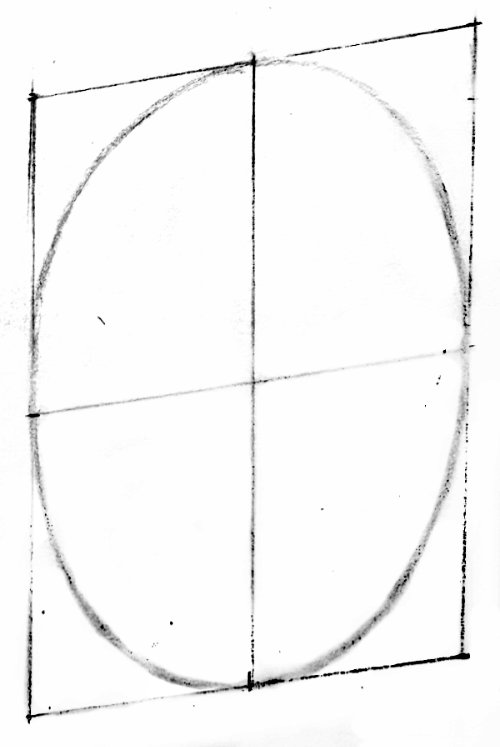
What works for me is to not look at what you are drawing but at where you are going. You're aiming to end that curve flat against the next mid-point target. And I can see you're achieving that...
Because this is almost as perfect as it's possible to achieve! Just to make certain, I applied the ultimate test - copying one half, flipping it and laying it over the other half (top blue over bottom red).

WEEK 2: EXERCISE 4

The strength and sharpness of the foreground post gives you a lot of scope for controlling the recession right back to the hazy furthest post. The recession is exaggerated to some degree, but that's perfectly OK. We graphite artists can't suggest recession by adding blue, so a little exaggeration really does help.
Lovely work!
Debra (Assisted Online Intermediate)
WEEK 1: EXERCISE 1I have sent the black square with one layer, then sprayed it and... created a second layer...

Strong darks are important! If we assume that your drawing has one very dark value or black in it, as soon as that dark area has been drawn you immediately determine every other value within the drawing. Every value in your drawing has to fall between that dark value and the white of your paper. If that "dark" is light you will force yourself to work with a palette of light greys. Unless it was intentional, that usually leads to a flat drawing. Setting a wide range of values, by making your darks dark will help with three-dimensional rendering and add visual impact to your work.
WEEK 1: EXERCISE 2

This was a difficult concept to explain so it's one you had to try personally. Any time a surface looks more like "drawing" than "real", try layering it lightly with a 2H. The result is a solid surface. The 2H seems to tie all the elements together, and dulls all the white content, which (in this case) wood doesn't naturally contain.
Do be careful to not over-detail wood in a drawing - not that you have. Here, where it's isolated, detailed grain might work well, but wood rarely displays a very pronounced grain - although weathering can dig into the softer spring wood and create a more sculpted surface. Wood tends to be a secondary element within a drawing so take care that it doesn't dominate the subject.
WEEK 1: EXERCISE 3
I quite enjoyed the stone floor simply because I find it so pleasurable to see what shows up.
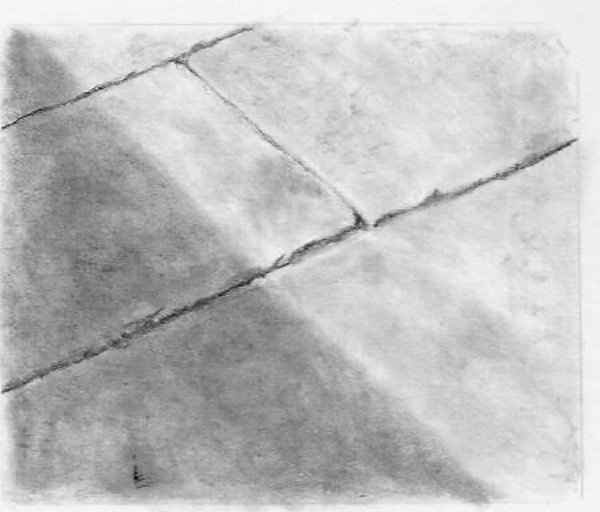
You've created some lovely textures in this. The human brain always seeks understanding, so I can see subtle pits and hollows with shadows and highlights...
I particularly love the edges of your stone slabs. That sort of immediate creation tends to only happen when you're lost in the drawing and thinking "stone slab".
There's not much sign of the graphite clumping, but that might only happen with my lead/paper combination... and even then, I can't guarantee it will occur. It's absence isn't a problem - this works very well as it is.
I keep going back to admire those sculptured edges...
WEEK 1: EXERCISE 4
This was challenging because plaster walls are not something I am familiar with and they are not readily available to check out. Unfortunately, I didn't find the online images helpful to give me the "feel".
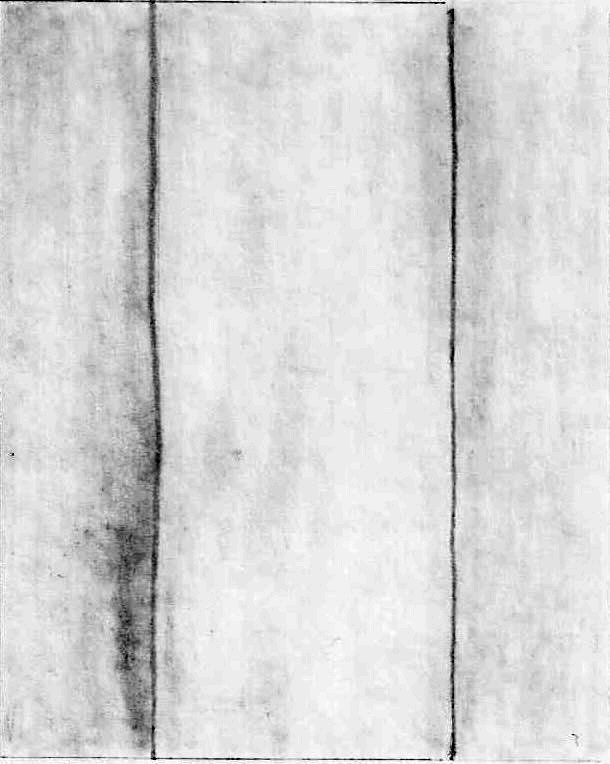
Despite your worries, I can see a lot of visual interest in this without it being clearly defined, which is what I was hoping to see.
I find drawing with a stump or tortillon is often a very rewarding and free way of working, and well worth experimenting with. I never throw tortillons or stumps away because, graphite laden, they are ideal tools for suggesting soft or misty textures or objects. I use this technique for old plastered walls, dirt floors, and misty background trees, to name a few.
WEEK 1: EXERCISE 5
Well that was a challenge and a half. I am far from satisfied but it is time to move on...
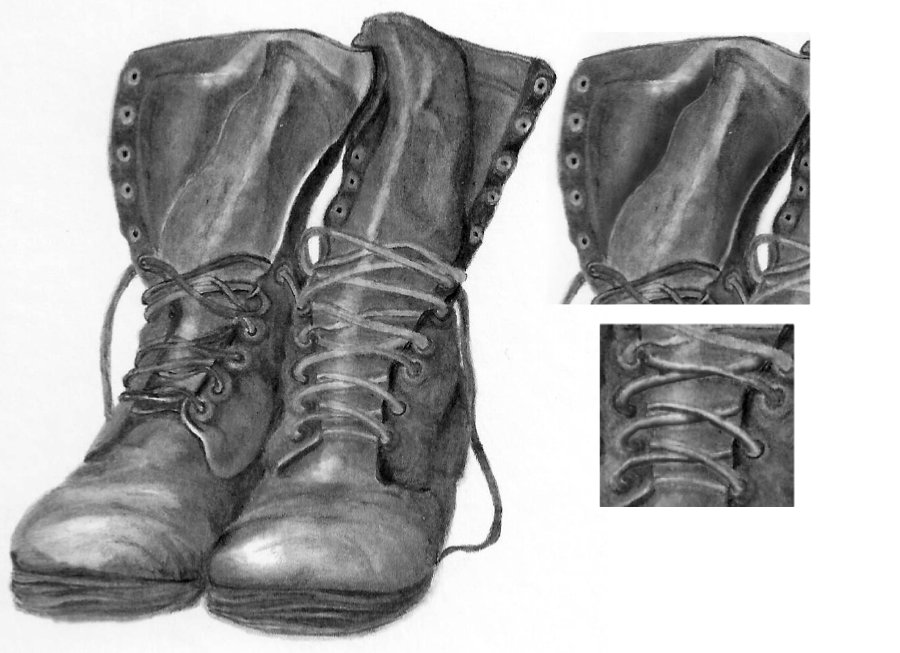
The delaminated soles would have benefitted from much sharper edges. Soft edges flow into each other; sharp edges separate. You definitely needed separation here.
Over all the feeling was too vanilla rather than a delight of contrasts. Certainly not my best work.
I'll skip past the laces and go up to the top... and it is, to use your description, rather vanilla - particularly the left-hand boot. You've used a white gap to represent the thickness of the leather, which looks completely unnatural. But I think you used because it needed to stand out from the adjacent tongue. If you'd darkened it, you would have lost that effect - but not if you had darkened the tongue to the same degree. Never take the reference as being cast in stone. Alter it to suit the story you're trying to tell.
By the same token, you've relied on a tiny light highlight to separate the left-hand edge of the tongue from the interior of the boot, yet darkening the interior would have been a much better choice. It would, at least, have created more visual depth.
I would have liked to have explored how to get a contrasting texture of fuzziness for the laces versus the smooth of the leather. I got completely lost in the laces, so they don't actually make sense. Hence they aren't shaded definitively. I used line on the left boot laces because I didn't like the lack of contrast in the right hand boot. But the lines didn't work either.
Personally, I think all that went wrong is the degree of sharpness coupled with a reduction in three-dimensional form. Well, not a reduction but a lost opportunity to exaggerate. You need those laces to stand away from the leather behind, so I'd be looking at exaggerating the three-dimensional form - deep shade in the lower half curving round to light highlights running along the top. I'm saying that without looking at the reference... because the reference only supplies shape and position. Yes, you can accept the three-dimensional shaping too, but you don't have to. Use whatever lighting or texture best suits what you're trying to describe. I'm sorry I didn't have enough time to the job properly but I hope the suggestion in the image above helps.
As to "fuzziness"... I'm not certain I'd want to do that. I understand your intension, but I think those laces probably need sharp edges. Softening them risks losing them back in the leather. But it's certainly worth a try - perhaps separately, away from the drawing, as a test first.
Carolyn (Online Advanced)
WEEK 5: EXERCISE 1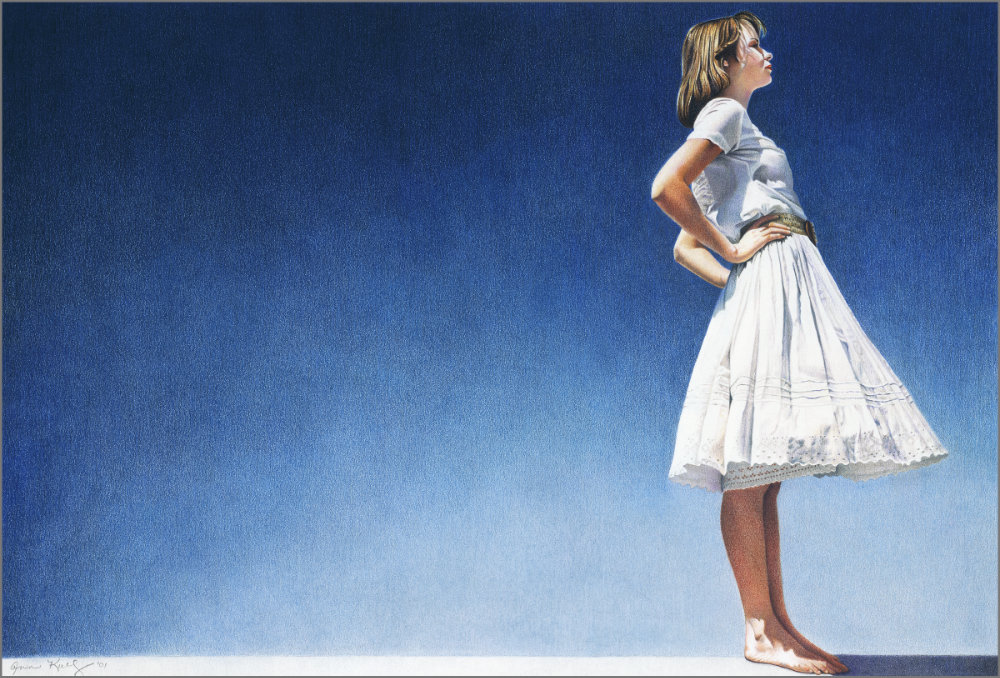
This drawing followed the rule of thirds, subject on far right. But is looking OUT of scene! There is no implied movement in this case. So this works to add drama, in my mind... An attitude of defiance is what I see in this. I think placing the subject this way works well.
First, that outward-looking pose itself breaks almost all the rules in one go... and yet it succeeds. I think this is a very special drawing of Ann's, and I've been attracted to it ever since I first saw it on my (now retired) Starving Artists website 17 years ago.
What works for me is that the girl appears to be leaning very slightly backwards, almost off balance, and that counteracts the forward movement implied by her right-hand position and looking out of the picture. It corrects the imbalance in the composition. Also, the arrow head of her elbows points me back in, and her head is slightly tilted back so she's not directly looking out of the frame but into the dark corner. In reality she is balanced - drop a vertical from her neck and it is correctly over her ankle But her hips are thrust forwards giving her that "leaning backwards" feeling. To be honest I don't really want to analyse it - just enjoy it.
Rule of repetition. It would be repetitive if the background was all the same solid blue. But the color gradient from light to dark blue is more interesting and makes my eye move around the picture. Using landscape is more interesting, too, leaving more space behind the subject, giving greater impact to the attitude of the woman. It wouldn't be as dramatic if it was in portrait layout. It has more emotion this way.
I absolutely agree with you. Personally, I think this is an excellent example of using the lighting for artistic effect without attempting to obey the laws of Nature. The light source appears to be high up on the left - that accounts for the shadow in front of her and that it only catches the back of her ankle. Her arms signify that too. But her face is also receiving light. I just noticed a shadow for the first time - cast by her right arm on her torso... if the light is high, just behind her, and between us and the girl, I think it all makes sense - including (almost) the light on the background plane. Previously I thought Ann was using reflected light to illuminate the front of the girl where light was required.
While not exactly a rule, have you looked for the eye-level? It seems low to me. I think the eye-level is somewhere around the hem of her dress or just above it. The ellipse of her belt proves that, and that I'm not particularly aware of looking down on her feet. We’re looking up at her which adds to my feeling that she’s standing tall and proud.
And Have you considered the Rule of Thirds? Other than the girl is standing in one third...
The subject's elbows point back into the space behind her, and her back is curved, with the dress flairing out in front of her. This makes my eye move around and back into the picture, instead of moving out of the drawing.
That, I think, is where the rule of thirds comes into play. She's almost exactly divided into thirds vertically. Not only do her elbows point back into the work - the point between her elbows is directly on a hot spot. And her left (lower) elbow is virtually on a one-third divisions, as is the rear corner of the skirt's hem, which is also very close to a hot spot.
You mentioned the gradated background earlier - what really works for me is that the girl appears to be leaning very slightly backwards, almost off balance, and that counteracts the forward movement implied by her right-hand position, and that she's looking out of the picture. It corrects the imbalance in the composition. Also, her head is tilted back so she's not directly looking out of the frame but into the dark corner. I wonder what she is looking at but that thought is defeated by the dark corner in front of her - in fact it's the darkest area of the background and possibly the darkest value in the entire piece, so perhaps she is only looking within herself?
I like this drawing a lot.
Me too! I could go on all day about this work. And, even after reading your analysis, and everyone else's over the years, I'm still not certain myself why it works - but it certainly does work!
Tutorials
by Mike Sibley


